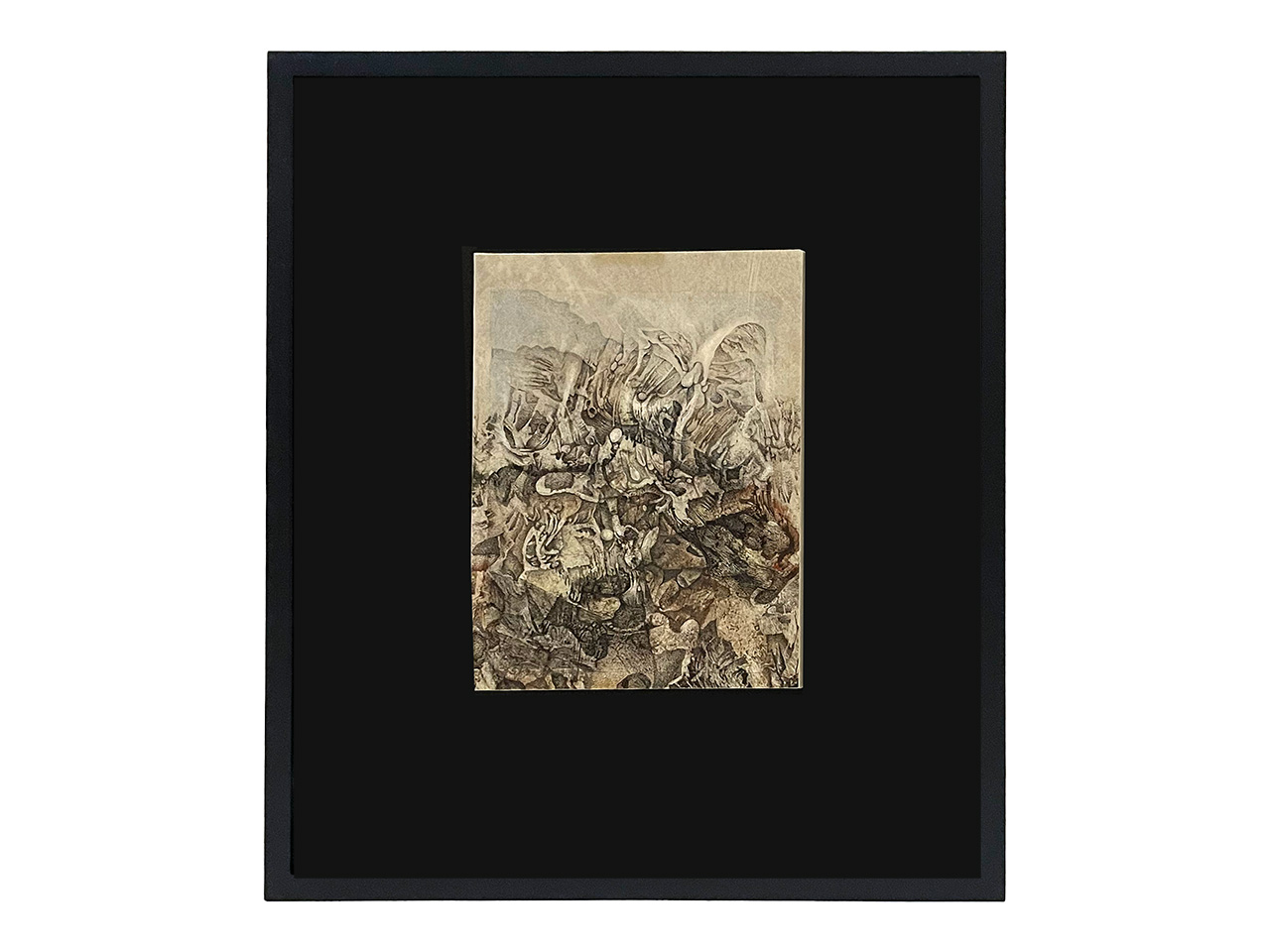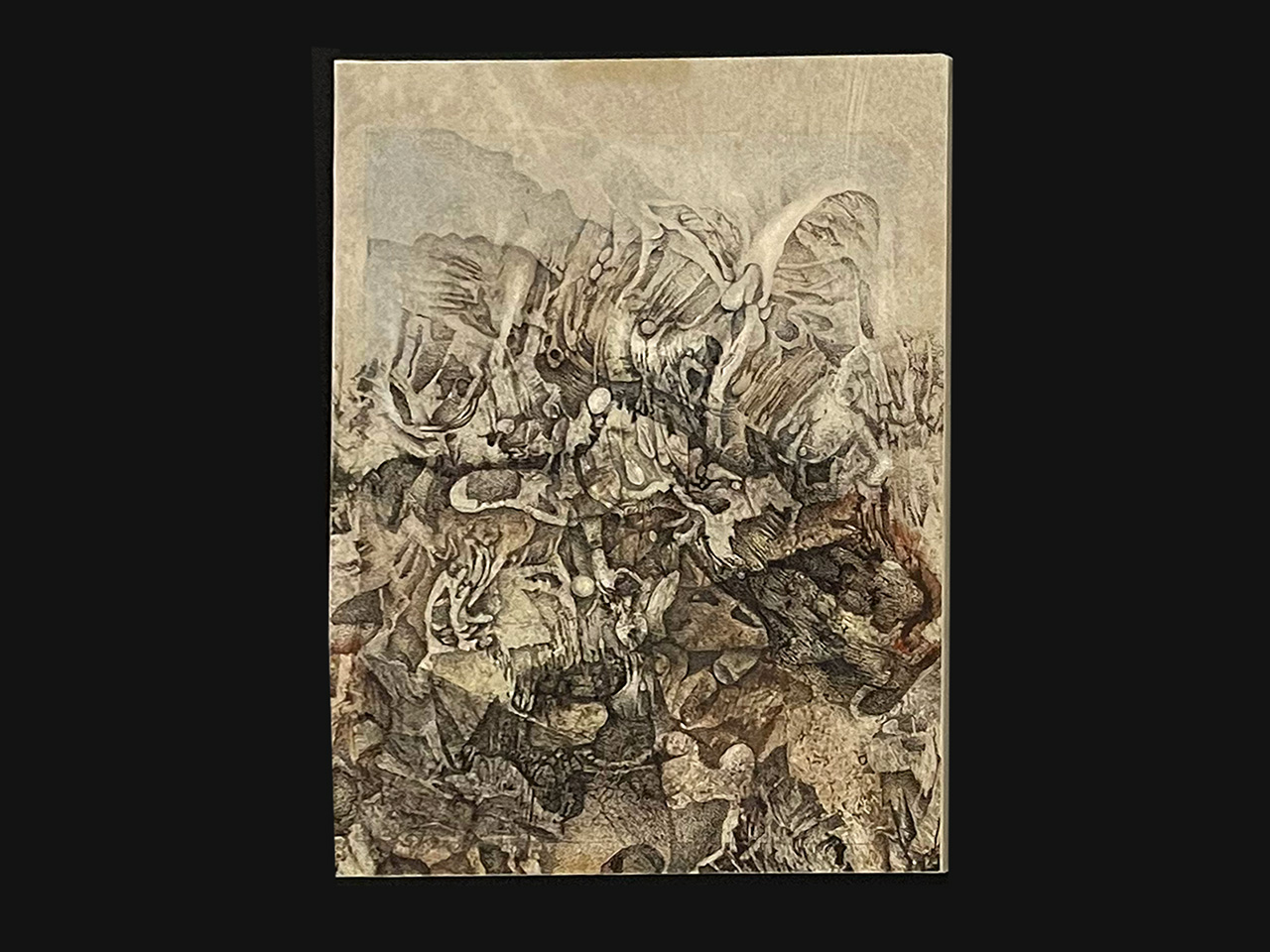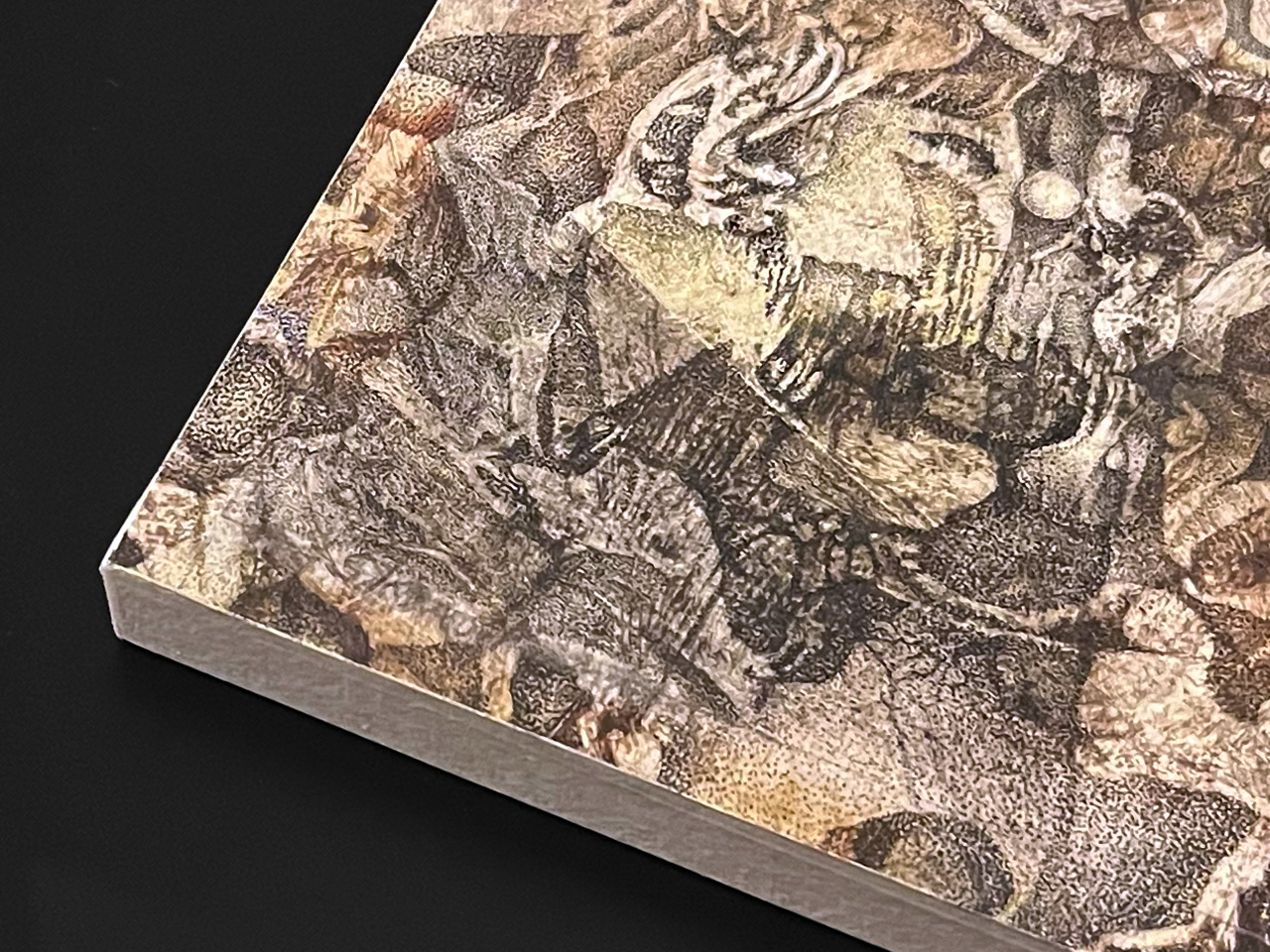川上 省三/Kawakami Shozo
川上省三(1929~2003)は、生まれ故郷の北九州市を拠点に活躍した画家です。
1945年に地元の九州工業高校電気科(現・真颯館高校)を卒業した川上は、1948年に西日本鉄道に入社して以降、仕事と並行して絵画の制作を行うようになりました。その後、1950年代後半から1960年代初頭にかけて福岡で隆盛を誇った前衛美術グループ「九州派」に加入しますが、在籍期間は1957年から1959年と短いです。斎藤秀三郎(1922~)や磨墨静量(するすみせいりょう・1925~2001)といった作家たちと同様、川上もまた、「九州派」の理念に共鳴したというよりは、良くも悪くもグループとしての輪郭が明確ではなく、どんな異質な個性をも飲みこんでしまうその雑多さと勢いのなかに組みこまれたという見方が適切でしょう。政治色が強い「九州派」のなかでは純粋美術派と呼ぶべきジャンルに分類され、グループの運動や思想ではなく、創作における実験精神を意欲的に学んでいたと言えます。
それゆえ、公募展への出品をめぐる論争によっていくつかの分派が生まれた1959年には、川上も「九州派」をはなれ、斎藤や磨墨が中心となって立ち上げた「グループ西日本」に参加し独自の抽象絵画を追求していきます。ちなみに、「九州派」に強い影響を受けたアーティストとして知られる森山安英(1936~)の証言によると、「九州派」時代の川上は「アベベ」などのジャズ喫茶を、働正(はたらきただし・1934~1996)とともにたまり場にしていたそうです。そうした交流の場で地方の若手作家たちがつながり、新しい時代の機運を生み出していた様子が窺えるエピソードの一つです。そして、1966年に西日本鉄道を退社した川上は、いよいよ創作に専念するようになります。2003年に亡くなるまで北九州市の展覧会や美術館を中心に作品を発表し、その最期も同地で迎えました。
『九州派展―反芸術プロジェクト』(福岡市美術館、1988年)に寄せたコメントでは、多くの作家が長文で自身の思いをつづるなか、川上は次のような、実に簡素な言葉を残していました。「誠に申しわけ無いのでありますが、私は文章が作れないのであります。ましてや現代美術がどうであるとか私自身の作品についての論文などとても書けたものではありません。ただいえる事は私の作品が私の文章であります。どうか私の作品(絵)を読んで下さい。」上記の文章からは、その作家性や芸術観がほとんど世に知られていない川上の、自身の芸術そのものをひたむきに見つめ続けた実像が垣間見えます。
Shozo Kawakami (1929-2003) was a painter who thrived based in his hometown of Kitakyushu City.
After graduating from the Kyushu Industrial High School Electrical Engineering Department (now known as Shinsokan High School) in 1945, Kawakami joined the Nishi-Nippon Railway in 1948 and began producing paintings alongside his job.
Subsequently, he joined the avant-garde art group called the “Kyushu Group”, which flourished in Fukuoka from the late 1950s to the early 1960s, although his tenure was brief, from 1957 to 1959. Similar to other artists such as Hidesaburo Saito (1922-) and Seiryou Surusumi (1925-2001), Kawakami was not so much in resonance with the ideals of the “Kyushu Group”. The boundaries of the group were neither clearly defined nor definitive; rather, he was assimilated into its diversity and momentum, which embraced various heterogeneous personalities. Classified as a pure art faction within the politically charged “Kyushu Group” Kawakami actively pursued an experimental spirit in creation rather than adhering to the group’s movements or ideologies.
Consequently, in 1959, when several factions emerged due to controversies surrounding submissions to public exhibitions, Kawakami also left “Kyushu Group” and joined “Group West Japan” initiated by Saito and Surusumi, to pursue his own abstract paintings. Incidentally, according to the testimony of Yasuhide Moriyama (1936-), known as an artist strongly influenced by “Kyushu Group”, Kawakami during the “Kyushu Group” era frequented jazz cafes such as “Abébé” with Tadashi Hataraki (1934-1996). This exchange provided a connection for young local artists, fostering a new era’s momentum. Then, after leaving Nishi-Nippon Railway in 1966, Kawakami devoted himself entirely to creation. Until he passed away in 2003, he exhibited his works primarily in Kitakyushu City’s exhibitions and museums, where he also spent his final moments.
In his commentary for the “Kyushu group Exhibition – Anti-Art Project” (Fukuoka Art Museum, 1988), among many artists who wrote lengthy expressions of their thoughts, Kawakami left the following simple words. “I am truly sorry, but I cannot write essays. Let alone about contemporary art or my own works. All I can say is that my works are my essays. Please read my works (paintings).” From the above passage, we catch a glimpse of Kawakami’s earnest contemplation of his own art, largely unknown to the world, which was his true essence as an artist.



作品名:作品252
サイズ:20×15cm(デカルコマニー)
価格:150,000円
価格は税抜き表示です

